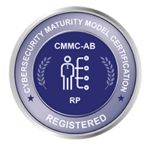Mobile Device Management (MDM) software was never intended to protect mobile data. When first designed, MDM enabled organizations to provision workflow tools and manage the activity of employees on company devices.
In today’s workforce, more and more employees are using their own devices while connected to the company’s network and handling company data. This proliferation of BYOD has significant advantages in employee productivity and satisfaction, but is worrying IT administrators with security concerns. This BYOD & Mobile Security report from Crowd Research Partners surveyed over 800 cyber security professionals, including companies that had yet to adopt BYOD, and reported security as their largest roadblock to effective BYOD adoption at 39 percent.
MDM and False Senses of Security
This roadblock is a major contributor to many enterprises relying on MDM as the method of choice for endpoint security for mobile devices in their network, relying on its remote wipe function in the case of a lost or compromised device as the only line of defense. Today’s threat landscape requires a more proactive approach to securing mobile workflows for employees working remotely. In this Forbes article, Thomas Porter, senior director-enterprise security at Fortinet, makes the case against remote wipe as a method of security. His postulation can best be summarized in this analogy he makes in the article: “If, in your security procedures, a situation arises where an administrator’s only option is to remote wipe, then it’s already too late. You can wipe the barn door (and the barn if you like) but the horse is long gone.”
With this quote, Porter simply articulates the false sense of security that comes with MDM and its remote wipe capabilities. Hackers are quickly surpassing device-level passwords, and remote wipe may not even be a viable option if the radio has been turned off in the device. Even if it only took 10 minutes to notify security admins and wipe the device successfully, how much data was lost in that time? MDM software is still relevant and doing a bang-up job handling device oversight, but the state of mobile endpoint vulnerability necessitates another approach to securing enterprise data on employees’ devices.
In Terms of Compliance
We are faced with the challenge of conducting business in a time where regulations and fines for non-compliance are rising alongside the consumerization of IT. Employees expect the freedom to use their personal devices in and out of the office, and weighing down employee devices with bulky security software and policies hampers functionality. BYOD users relish the functionality they had upon purchasing their phones, so this approach is less than optimal. No single approach to security will totally secure company data, so perhaps a better method would be to manage risks rather than to attempt to control them.
An effective method of risk management is device containerization. Technology like SyncDog’s SentinelSecure™ C2 (collaborative and containerized) Workspace offers a secure mobile app solution in-step with the demands enterprises face for security and compliance. SentinelSecure™ quickly and easily integrates into existing MDM and EMM (enterprise mobility management) tools, offers real-time visibility into possible threats, uses encrypted workspaces to secure your enterprise’s backend, and has a full suite of secure, partitioned applications for maximizing mobile workflows. Click here to see how SentinelSecure works in a 30-second video.
One practical use of the container has been to secure crime scene processing workflows on mobile devices for a large metropolitan police department (MPD). Audited MPDs struggled to transfer data from a crime scene to the MPDs’ datacenter securely, and unsecure SMS texts with investigative information were found on BYOD or CYOD devices. The mobile workflows themselves proved challenging and cumbersome as well, slowing the investigative process. The SentinelSecure™ C2 Workspace both enabled mobile productivity and secured sensitive crime scene data, allowing police and detectives to focus more on investigations than security risks.
Every day, major companies are dealing with stolen or compromised data, and their ability to deal with breaches can and will have an effect on the bottom line. Regulations like the upcoming GDPR, plus HIPAA, PCI DSS, and others, are increasing fines for non-compliance. Is your IT security team prepared to deal with the inevitable? Click here to request a free security assessment.
For more information on SyncDog and the SentinelSecure™ C2 Workpace click here.
